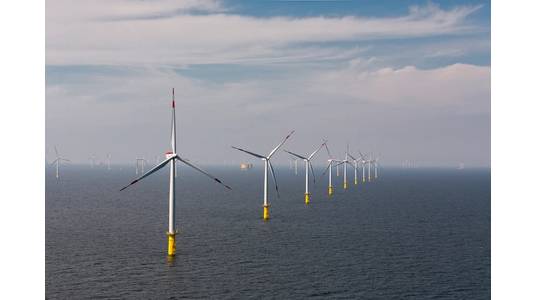
Wind turbine maker Siemens Gamesa lowered its 2022 profitability expectations even further on Tuesday and said it would remain negative through 2023, citing expensive raw materials, component failures and geopolitical uncertainty.
The group cut its full-year core earnings margin forecast to minus 5.5% from minus 4%, including gains from selling its development division.
Competition, COVID-19 disruption and runaway metals prices exacerbated by the war in Ukraine have made producing masts and blades for wind turbines a tough business in recent years, despite strong demand from governments banking on wind energy to wean themselves off fossil fuels.
Siemens Gamesa has struggled in particular, partly with delivering new products. This prompted its majority shareholder Siemens Energy to launch a 4.05 billion euro ($4.2 billion) bid to buy the one-third stake it does not already own.
A new operating model will be finalized this year and come into force in January 2023, the company said. This includes "staffing and footprint optimization actions" globally.
"In some parts of our organization there are capacities way beyond their need and that needs to be rectified," Chief Executive Jochen Eickholt told analysts on a conference call. "We will continue to work on detailing that."
People familiar with the matter told Reuters the firm is considering cutting around 9% of its workforce.
Under the new model, the company also said it plans to strengthen the roles of Chief Operating Officer and Chief Technology Officer, a move applauded by analyst Shashi Barla of energy transition consultancy Brinckmann.
"Those are the things they need to fix today. One is fixing the technology ... still there is a lot of room for them to improve, strengthening the product lines... and trying to focus on the markets which matter to them the most."
The group reported a net loss of 446 million euros for the third quarter and an earnings margin of minus 14.1%. It said it expected its core earnings margin to "remain negative" in 2023.
The company formed in a 2017 merger between Spain's Gamesa and the wind unit of Germany's Siemens, and has operations in Europe, North and South America, Africa and Asia.
Eickholt said it would focus on "a smaller number of core markets where we want to be successful".
A push to pass on to customers some of the extra costs it now incurs to make and move components around the world is starting to bear fruit, with the average selling price of onshore turbines hitting 0.89 million euros per megawatt hour in the third quarter compared with 0.63 million in the middle of last year.
"The trend is clearly positive and takes us back to pricing levels of the year 2017 or 2016," Eickholt said.
He later added: "We need to see a different price level, otherwise the energy transition as such will certainly be delayed as regards the wind business."
Component failures and repairs, mostly in the onshore business, cost around 4.6% of revenue in the third quarter.
($1 = 0.9785 euros)
(Reuters; Reporting by Isla Binnie; Editing by Christian Schmollinger, Christopher Cushing and Jan Harvey)



